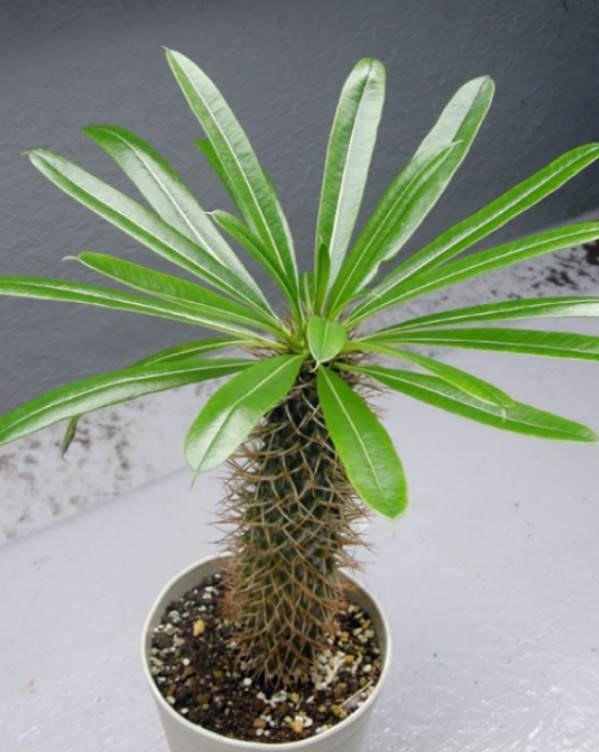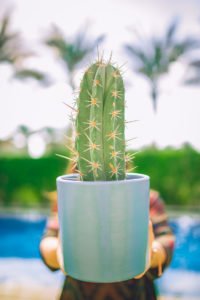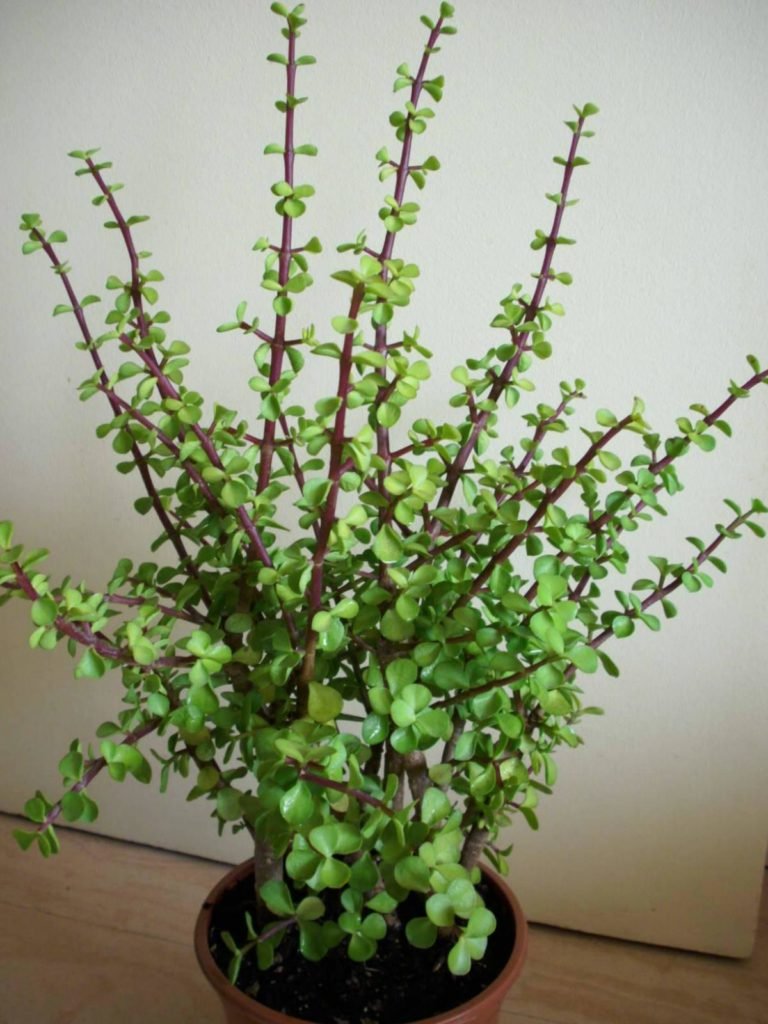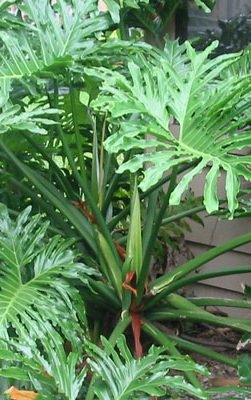Plant Your Roots with Tova Plants
The cactus is an iconic houseplant that will bring a unique and interesting look to your interior space. With its distinct shapes, the cactus can add character to any room. We offer a variety of indoor cacti from our popular Echeveria Purple Pearl Leaf through to our mini varieties, ensuring you find one that fits in perfectly with all kinds of trends.

Madagascare Palm Tree

The Madagascar Palm is a unique and easy-to-grow succulent plant native to South Africa and the island of Madagascar. It features a single spiny trunk topped by a spray of long, narrow leaves that give it the appearance of a small palm tree. This tropical succulent is one tough plant as it can withstand heat, drought, and irregular water with ease. The Madagascar Palm loves sun but also does well in bright light conditions indoors making it an ideal houseplant for those looking for something different in their home decorating scheme. Growing 6-12” per year indoors or up to 20 feet tall outdoors when planted outside; this slow growing plant may even produce white trumpet like flowers if grown outside although blooming rarely happens when kept inside mature plants tend to branch out after flowering giving them an interesting look all around!
Cactus

Cacti are among the toughest of all houseplants, and they bring a unique, stark beauty to any windowsill or brightly lit room. Cactus are an ideal choice for those looking for a low-maintenance plant that is easy to care for – perfect even for beginning plant owners! To ensure your cactus thrives indoors, make sure it gets at least 4-6 hours of direct sunlight each day; we recommend placing them in your brightest window (often southeast facing) and rotating them daily so they don’t become etiolated. With just minimal effort on your part, you can enjoy the statement piece that is a cactus!
Cacti are known for their ability to survive with minimal watering, but that doesn’t mean they don’t need it at all. It is important to check the soil every few weeks; if the first 2-3 inches of soil are dry, then it’s time to give your cactus a drink. Additionally, using fertilizers specifically made for cacti will ensure optimal nutrition and prevent over or underfeeding. When repotting your cactus be sure to wear protective gloves or even use kitchen tongs in order avoid any unnecessary spikes and pricks from these plants!
African Milk Tree

African milk tree (Euphorbia trigona) is a peculiar and curious looking houseplant that has become increasingly popular due to its easy care requirements, pest resistance, and fast growth rate. This mix between cactus and succulent features triangular stems with three distinct sides seamed with ridges. The leaves are tear-dropped shaped while the ridges are dotted with thorns for added interest. African milk tree grows vigorously approximately 1 to 2 feet a year up to 9 feet tall when grown outdoors; however when kept indoo犀利士
rs it will only grow half of its size making it an ideal specimen for adding interest in sunny spots without taking up too much space. The Royal Red cultivar is especially popular as it takes on bright red accents late in the season giving off an even more dramatic look!
African milk tree is a hardy succulent that can thrive in bright, indirect sunlight. A southern-facing window works well for indoor growing. Good drainage conditions are essential to the plant’s growth and health, so if you have heavy clay soil amend it with sand or sandy loam to create proper drainage and pH levels (6.1 – 7.8). African milk tree doesn’t need much water; indoors plants should be watered moderately once a week but allow the soil to dry out between each watering as this replicates its natural habitat of dry or arid climates which can withstand fairly hot temperatures in summer犀利士
months; however, keep it away from direct sunlight during these times as too much heat may cause stress leading to fungus or pest infestation.
Echeveria purple pearl leaf

The Echeveria Purple Pearl is a stunning succulent that will bring elegance and serenity to any living space. With its unique, pearl-like purple leaves delicately curved foliage, this beautiful plant captures the eye of all who see it. It prefers full sun in warm climates and requires well-drained sandy soil with regular but infrequent watering during summer months and no water at all during winter months. This low maintenance succulent is an ideal addition to modern living spaces for those looking for a little extra beauty in their home or garden!
Opuntia aurea

Opuntia aurea is a prickly pear cactus that grows in southern UT and northern AZ. This species is popular both as a garden specimen and as a houseplant, growing 9 inches to 2 feet tall with yellow flowers blooming in late spring or early summer. It has spiny, flat, club-shaped pads with large round spines or tiny hair-like barbs which detach upon contact. The plant’s growth rate is fairly slow but it thrives when exposed to full sun for at least six hours per day; indoors this can be achieved by placing near west- or south-facing windows while providing some shade during midday may help prevent scalding due to extreme heat outdoors. Opuntia Aurea likes dry conditions and very little watering is required so long as the soil offers good drainage without too much water present – sandy or gravelly soils are ideal although other types of soil can also work well given the right circumstances. it is an excellent choice for many gardening projects!
Portulacaria Afra Elephant Bush

Portulacaria Afra, commonly known as Elephant Bush, is a succulent native to South Africa. This plant serves as an important food source for elephants and other wildlife in their natural habitat. The Elephant Bush features fleshy and glossy emerald-green leaves that grow into a small bush with thick brownish-reddish stems. Not only does this gorgeous plant beautify indoor spaces but it also works as an air purifier by removing excess carbon from the air. To ensure optimal growth of the exotic plant, it should be placed close to a window so that it can receive 5 or 6 hours of indirect but bright sunlight each day. When watering your Elephant Bush you should aim for moist soil; however too much water can open up the possibility of fungal attacks so you should water once per week during hot seasons and once every 10 days or 2 weeks during cooler climates.
Lacy Tree Philodendron

The Lacy Tree Philodendron is a beautiful, non-climbing large plant that adds a touch of greenery to any home or office space. Its leaves are simple, large and deeply lobed with ruffle-edged edges and dark green in color. The trunk is relatively thick and woody with characteristic eye-drop leaf scars that can grow up to 2 ft long attached to long smooth petioles about 2 ft long. It requires bright light without being exposed directly to the sun for 6 hours daily as well as consistently moist soil but at the same time well draining; it also needs heat so avoid freezing temperatures when caring for this plant indoors. In addition, studies have found it has air purifying capabilities making it an ideal healthy addition for indoor environments!



Leave a Reply